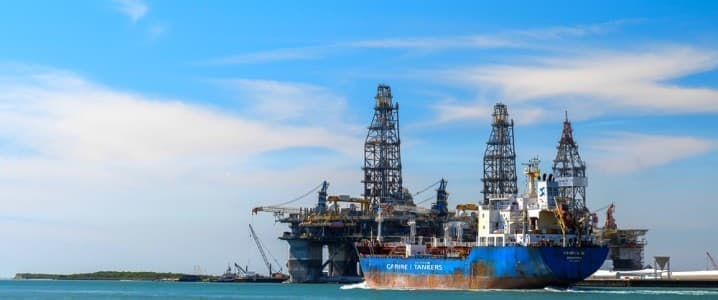
The Gulf of Mexico is on track for a remarkable surge in oil production, with estimates projecting output to reach nearly 2.2 million barrels of oil equivalent per day (boepd) by 2026. This anticipated increase is largely attributed to the startup of three new floating production units (FPUs) set to commence operations by the end of 2025.
The year began with the successful launch of Shell’s Whale FPU in January, which achieved peak production rates of 100,000 barrels per day (bpd) within five months. Following this, in July, private operator Beacon Offshore Energy celebrated the launch of its Shenandoah project, marking a significant milestone as the second project to utilize advanced 20K technology for high-pressure, high-temperature (HPHT) conditions, managing wellhead pressures of up to 20,000 pounds per square inch (psi).
The final addition to the 2025 lineup is the Salamanca FPU, a collaboration between LLOG, Spanish producer Repsol, and O.G. Oil & Gas. Its output is expected to begin shortly, contributing to the overall increase in production capacity for the region. The Gulf is experiencing a revival, rebounding from the price crash that impacted the industry a decade ago. The floaters set to start in 2025 are expected to add nearly 350,000 boepd of nameplate processing capacity, the highest since 2015.
Significant Developments and Future Prospects
In addition to the new FPUs, four subsea tiebacks have also commenced operations in 2025, further adding to production capabilities. The largest of these, Chevron’s Ballymore development, targets the Norphlet trend and connects to the major’s Blind Faith FPU. Shell’s Dover field will contribute around 20,000 boepd to the Appomattox FPU. BP has also announced the early startup of its Argos Southwest Extension project, which is set to include a three-well tieback with peak production estimates of 20,000 bpd.
Overall, the startups in the Gulf of Mexico for 2025 are projected to add a total of 350,000 boepd in production between 2026 and 2027, with new FPUs accounting for approximately 70% of this near-term volume. Notably, this group of new projects is expected to contribute between 15% and 18% of total U.S. deepwater output, marking the highest contributions from a single startup year since 2009.
Looking ahead, the next five years promise significant new commissioning activities, with notable FPU projects like Sparta, Kaskida, and Tiber targeting challenging reservoirs in the Lower Tertiary region. Increased leasing activities and the initial outcomes from multi-client ocean bottom node (OBN) seismic surveys are likely to pave the way for new discoveries, as U.S. deepwater operators explore fresh opportunities.
As 2025 unfolds, it is poised to be a standout year for the Gulf of Mexico, characterized by significant advancements and production potential, as confirmed by Rystad Energy. The trajectory of deepwater production is set for an exciting phase, marking a pivotal moment in the region’s oil landscape.






